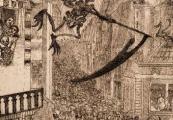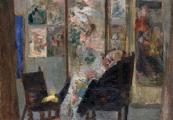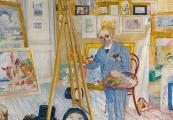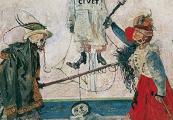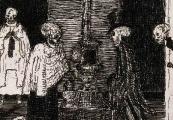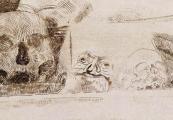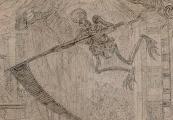This archived website ‘James Ensor. An online museum.’ is temporarily not being updated. Certain functionality (e.g. specific searches in the collection) may no longer be available. News updates about James Ensor will appear on vlaamsekunstcollectie.be. Questions about this website? Please contact us at info@vlaamsekunstcollectie.be.
Ensor and the Skeleton Motif
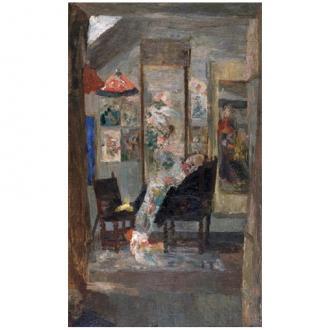
In 19th-century literature, the fantastic and the spiritual experienced a great period of prominence with writers such as Fyodor Dostoyevsky, Honoré de Balzac, Charles Dickens and Victor Hugo. They found inspiration in the occult. In their works, reality was in conflict with the dream; the body with the soul, reason with madness. The personages were driven by the fear for death. Plastic artists such as Félicien Rops, Alfred Réthel and Charles Meryon also created macabre compositions on this theme. In James Ensor‘s work, the concept of vanitas, the transitory nature of the earthly existence, often appeared. He even reworked various paintings in order to give them the concept of vanitas. Still more, he fluidly combined the macabre (the skeleton) and the grotesque (the masks).
Thus, in Skeleton Looking at Chinoiseries (1885 and 1888) he replaces the personage in the fauteuil by a living skeleton and adds skulls and 'Japaniseries‘ to the composition.
In the etching, My Portrait in 1960 (1888), Ensor portrays himself in the grave, one hundred years after his birth in 1860, in the company of a spider and a serpent. The first version of the etching My Portrait as a Skeleton (1889) is an exact copy of a photograph taken at his friend Rousseau‘s house in Brussels. In the second version he makes his face a skull, by which he gives the etching a genuine memento mori meaning.
Xavier Tricot

